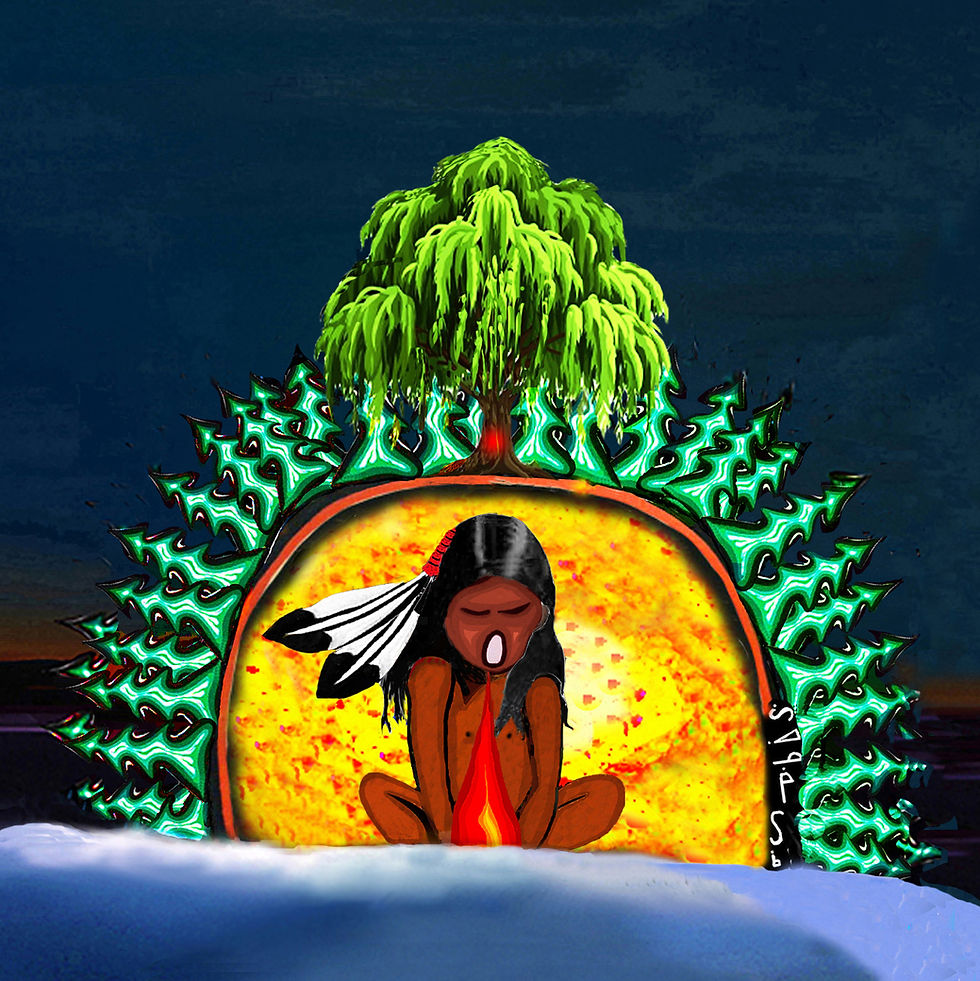Stories and Teachings From the Earth, part 15: Why Storytelling Is About Context
- zhaawano

- May 4, 2024
- 4 min read
Updated: Aug 5
Namebine-giizis (Suckerfish Moon)/Zaagibagaa-giizis (Budding Moon) - May 4, 2024

Boozhoo gakina awiiyag (Hello everyone)! Indigenous authors, mainly playwriters of Anishinaabe descent, sometimes approach me and tell me they are a big fan of genre fiction, especially sci-fi and fantasy. Some tell me they plan on writing a fantasy set in semi historical Anishinaabe Aki – the original homelands of our People – , and that it involves characters from certain traditional stories. So they're basically asking questions along the line of "If my story involves characters from an aadizookaan (traditional story) but doesn’t tell that story specifically, would that be culturally acceptable?"
I usually answer by saying something like "You already intuitively understand the importance of staying close to the old storytelling traditions so I'm sure it will be OK."
I go on by explaining that when I tell a story I always take an aadizookaan – or a string of aadizookaanan – as starting point and respectfully weave my own experiences, dreams, and imagination into it. Thus, I like to believe that new life is blown into the old storyteller traditions – which is perfectly in line with what storytelling is about in the first place. Many generations of storytellers have done the same before us and the aadizookaanan that are being told today are the product of exactly that process. This principle is the leitmotiv of the story Debaajimood and the Storytelling Tree, which describes a (fictional) conversation between Wenabozho's grandmother and Debaajimood, the first storyteller of our People.
The keyword here is context. Context is everything in our storytelling tradition. As long as a story is told within the context of our old worldview and language you cannot go wrong. It may also be helpful to realize that in the old days, stories, which were being told during long evenings, were characterized by long, spun-out, interrelated teaching themes. A story told never stood on its own, but was rather a link in a long chain of narratives that together made up one big story. The characters represented metaphors and were always intrinsically linked to the land, the spirits, and the other characters in the story.
When you introduce, for instance, Wenabozho into your story it is OK to present him as a sword-fighting hero in a space ship, as long as you keep in mind, and somehow integrate in your story, that, according to tradition, in our present time he leads a dormitory existence as a sleeping giant somewhere out west. So if you want to have him as a protagonist in your futuristic story you must awaken him from his stone slumber and reintroduce him within the proper context – as he is awaiting a time when a new generation of people will rise up that will walk the mino bimaadiziwin road of the ancestors again. *
Another example: the story The Amazing Journey of Two-Spirit Thunder is a modern story (as it addresses the contemporary theme of Two-Spiritness) told in the context of our old storyteller tradition, but it also has Fantasy/science-fictional story elements woven into it.
Enjoy!
*Mino-bimaadiziwin: Literally, "Good Life": The virtue of leading a long, honest, and wholesome life.



Many years ago I asked for a word to describe the life we were trying to achieve with a community center. I was told the word mini bimadiziwiwiin (good life) and also esh bimadiziwiin (way of life) I hear the first one now, but never the latter. Do you?